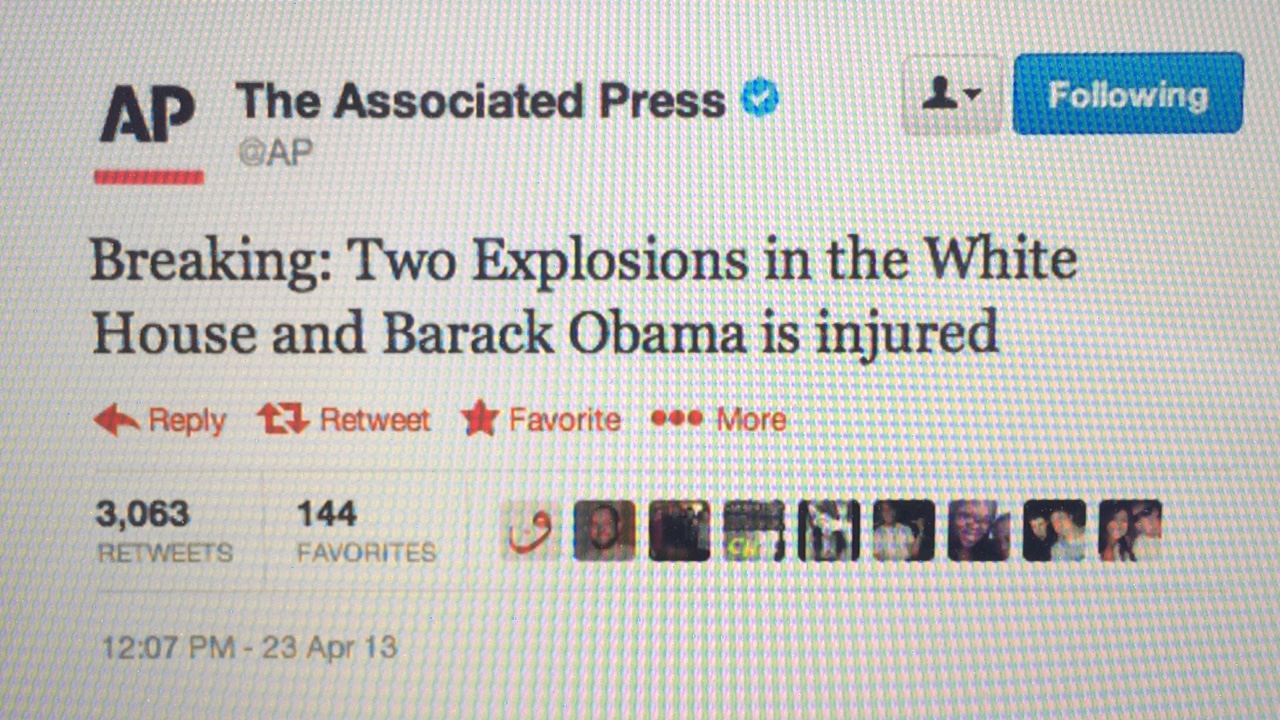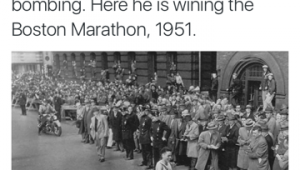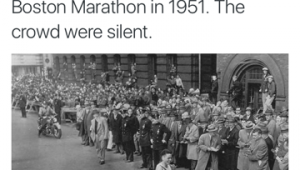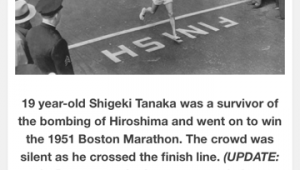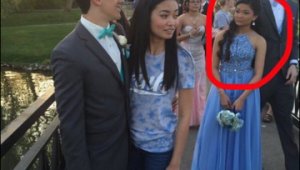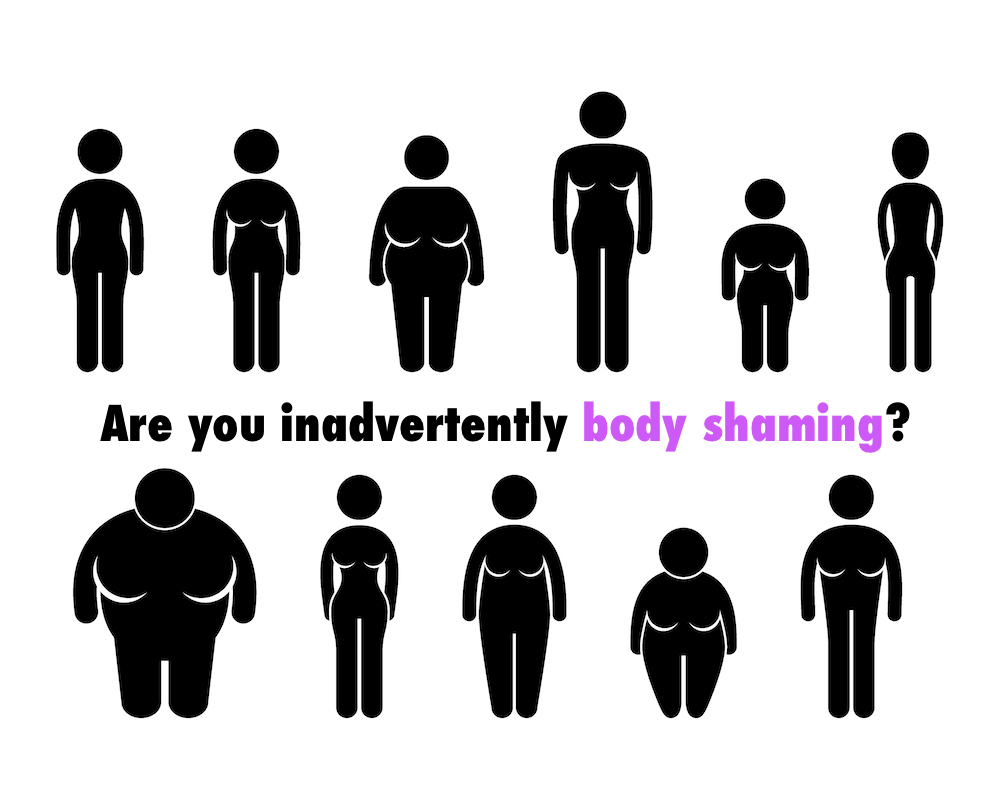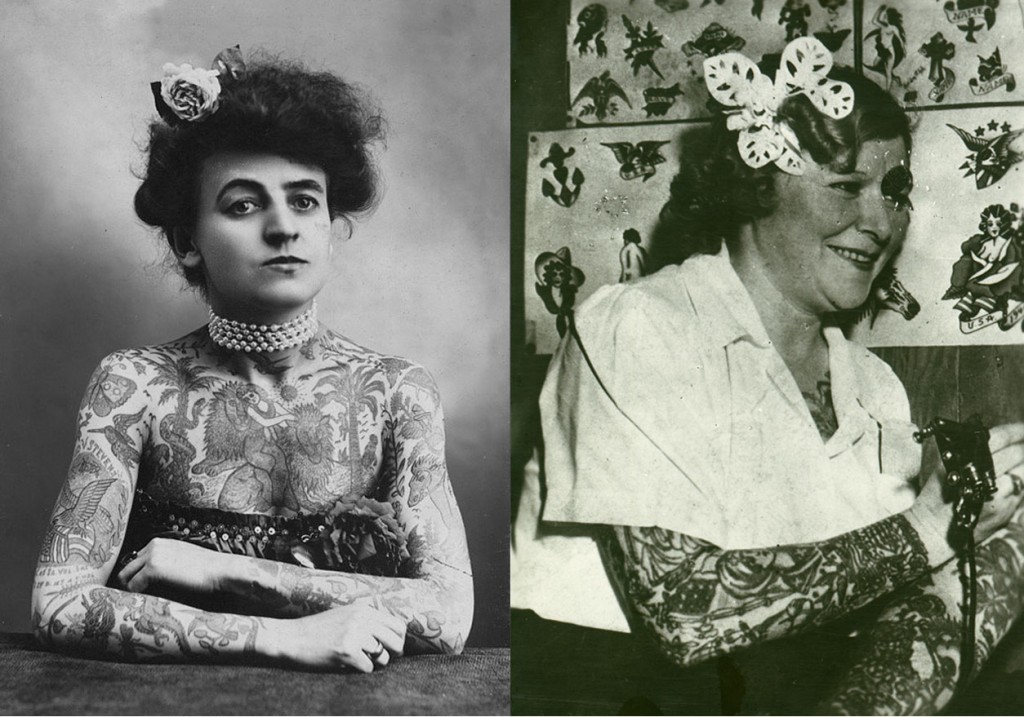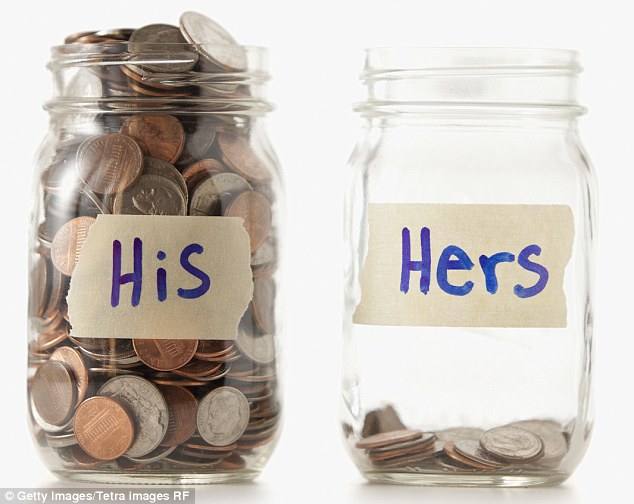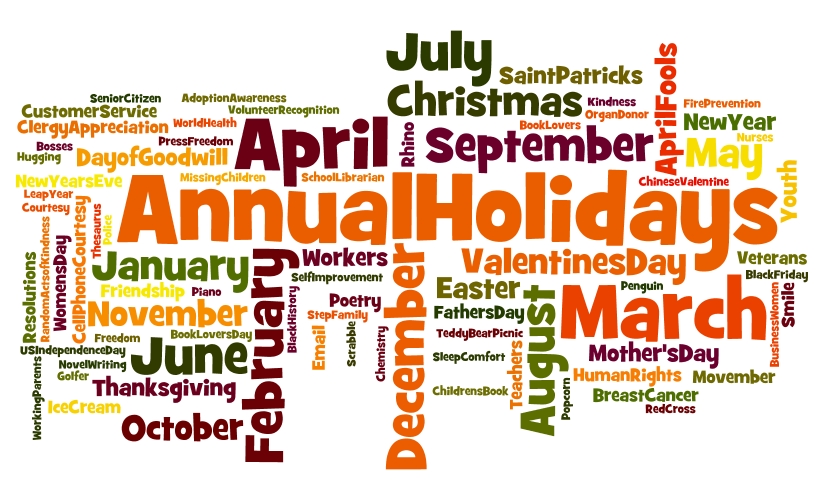Twitter: Enabling a Generation of Lazy Researchers
In the age of technology where hundreds of millions of people use twitter in the form of business, news, comedy, politics, and personal use.
We live in an era where the technology that we have created has made our society into having access to quick, easy information at the touch of a button that gives us the immediate answers that we “need.” Our growing greed may even be willing to accept ill-informed sources or content lacking in research.
These 140 characters or less of concise information have no merit to them, I have found, after researching them myself. Here are a few examples of tweets that I have come across on my twitter feed:
From the mistake of a simple photo, where History in Pictures twitter account tweeted a photo of Leonardo DiCaprio and Kate Winslet behind the scene of Titanic. The caption along the top of the photo stated, “Snoop’s senior photo, 1989.” Although this is a small, obvious mistake, the tweet has not yet been deleted.
Another example is shown in a case of misappropriation through a tweet by the twitter account Regina George, which had been favorited by over one thousand people within two days of posting the tweet. The way the picture is conceived, the tweet shows photos of a girl visibly upset with her supposed prom date who was taking prom pictures with another girl. The caption above the photo says, “Prom was over for him before it even started." However, this situation is misconceived. When I first saw this photo, I had to do a double take. The girl’s actual prom date is the guy right behind her in the second photo. I know this because the guy behind the girl is my cousin and his girlfriend.
"College tuition in France costs $400,” was tweeted a few months ago by the twitter account Common White Girl. The account has often displayed behavior of copying content and posts from other accounts under its own twitter name. This tweet popped up after someone I followed retweeted this post. Although the tweet from this account has since been deleted, there is still evidence of the statement's remains around the twitterverse. This statement isn't completely untrue, there are extenuating circumstances to this situation. While the tuition cost is much lower according to www.studyineurope.eu, showing that first cycle degrees or bachelors degrees only cost 189 euros per year at public universities, this case is not always the same. Pricing is dependent on both the choice of school as well as the major and program you decide to follow. Tuition in France, between their offered private and public schools, can range between 500 and 10,000 euros. While much cheaper than the cost of a bachelors degree or even masters and doctorate program in America, it is not completely accurate to say that college tuition in France is $400.
History in Pictures also released a tweet involving Shigeki Tanaka winning the Boston Marathon in 1951. In one tweet released by History in Pictures, it is said that “Shigeki Tanaka lived just outside Hiroshima at the time of the bombing. Here he is winning the Boston Marathon, 1951.” Yet, 4 days later, History in Pictures tweeted the same picture with the caption, “Survivor of the Hiroshima atomic bomb, Shigeki Tanaka won the Boston Marathon in 1951. The crowd were silent.” After going through several websites where this tweet seemed to come from the tumblr and imgur trackless rabbit holes, one Wordpress website included this photo along with other vintage photos and captions. Yet, this the author of the website also pointed out that a commenter, Peter, found that Tanaka lived over 20 miles away from the Hiroshima bombing site. It is also noted that Tanaka was at home when the bomb dropped. Therefore Shigeki Tanaka is not technically a survivor from the bombing. These are just a small few examples that I have found over the past few months while scrolling through my personal twitter account on my own time.
These sites such as History in Pictures may already be preconceived as playful, small accounts that occasionally post information on historical or current events. Although these twitter pages are by no means near the same vector in quality of research from official news outlets like CNN, AP, and BBC. Yet, even the twitter accounts of these hard-hitting news publications are subject to mistakes. One major example of falsely reported information by supposedly accredited resources is shown through a tweet by BBC journalist Ahmen Khawaja in early June of last year. Khawaja tweeted, “Queen Elizabeth has died.” While the tweet was quoted by Khawaja who tagged BBC World’s twitter account, suggesting that BBC World was the original source. The fault was nonetheless that of the reporter Ahmen Khawaja releasing such information preemptively where twitter followers of these accounts may have only retweeted the claimed death of the Queen. The focus was on the Queen's alleged "death," rather than the tweet posted before about Queen Elizabeth being treated at a hospital, or the tweet that came after claiming that Queen Elizabeth’s death was a false alarm.
Although some of these tweets have been deleted since their posting, it doesn’t retract the tweets that have been viewed by thousands, even millions, of followers who have seen this information and have shared it with others via the online rumor mill of retweets or copying and tweeting these false posts. Screenshots can be very powerful, and once these short messages are released to the public to mass amounts of people, it isn't as easy as simply deleted what you said. Like the saying think before you speak, it is just as important to think before you write.
Body Shame and the Female Figure Throughout History
In the past, we have gone through numerous eras where all over the globe, different regions have had different time periods of what the “ideal” feminine figure was “supposed” to look like. In ancient Egypt during the early 1000 B.C. era, women who had symmetrical facial features, a high waist line, a petite, toned body and thin, narrow shoulders were idolized as the period’s desired female body. However, in ancient Greece between 300 and 500 B.C., women aspired to have a fuller figure with “plump” body features. This fuller body type was also worshiped during the ages of Italian Renaissance between 1400 and 1700, where woman with a rounded stomach, larger shapely hips, and bigger breasts were admired. During the Han Dynasty between 200 B.C. and 220 A.D., however, a slim waist and a small frame seemed to be model body type of women in China during this period.
Yet in westernized America, the culture of the female body and how it is portrayed in the United States only dates back to a few major eras between the 1600s and the 1900s. America has only had 400 years of history on the female form and how it is viewed in American society. Yet, the female figure was strongly influenced by other cultures, mainly British trends during these Georgian and Victorian eras. For example, during the 19th century women seemed to adore the Lillian Russell body type, an actress and singer who took on the Victorian England figure during the later half of the 1800s where woman with full figured bodies and cinched waists were thought to have the exemplary female body type.
However, within the 20th century alone, there have been decades of constant change where a new body type was idolized in U.S. culture or heavily influenced by other cultures. When the roaring 20s came into play, full or flappers and constant movement to the rise of jazz and ragtime, the petite and low, drop waist figure and a smaller bra cup size was very popular. But by 1950, the “hourglass figure” gained tremendous recognition with the famous Marilyn Monroe serving as the ideal 36-21-36 body measurements. In the 1970s, well known celebrities like Farrah Fawcett represented the ideal tall and lean body type. By the 1990s, the petite and small-framed figure was represented by Kate Moss and admired by woman of the time who coined the body type as “heroine chic” in the sphere of modeling. Now, in the 21rst century, the desired female form has taken on a new shape, influenced by celebrities like Kim Kardashian and Nicki Minaj with a larger bottom, bigger boobs, and a small waist.
Yet, although we have had a short-term establishment of developing views and ideas in the U.S., women's body's have always been a global topic of discussion and trends. Now, in 2016, there is still so much hate and so much negativity spread during the teenage years where children enter into the stage of adolescence in middle schools and high schools. And now, that same sickening hate has taken on a new vicious form in how it is distributed on a colossal level throughout the multiple social media platforms that contain comment sections. Although body shaming has taken on a new form with the rise of the internet, the same concept of needing to look a certain way in our society has existed in magazines with body trends set by celebrities or models. The idea of plus sized models didn’t even really come into existence nor was it recognized until 1998, when Ford plus created a range for plus size models.
Since 1959, when the famous Barbie doll first appeared in stores and under Christmas trees across the globe. The doll has lead an impossible standard with biceps 7 inches in diameter, a 16 inch waist, 29 inch hips, and 16 inch thighs. The Medical Daily Pulse reported that a real life Barbie with these measurements and her estimated height standing at 6 feet in proportion to Barbie’s measurements is unrealistic and physically impossible. Even Disney’s numerous princess set unreasonable body standards. Some include Ariel, Jasmine, and Belle who visually displayed inconceivable waistlines that neared the same measurements as that of their necks.
Why is it that our culture sexualizes our bodies as objects of desire rather than accepting bodies that we can exist comfortably and healthily in.
My sister always tells me how she wishes that she had no butt like me, or thinner arms like me. But she is a much healthier person than I am. She works hard to take care of her body, with exercise and clean eating. And although it is idolized to eat whatever you want, so to speak, without the appearance of adding on a single pound, maintaining a healthy lifestyle is an important part of life and taking care of your body is essential.
There is a difference between being fit and being healthy, and just because you are “fit” DOES NOT mean you are healthy. The Eating Disorder Hope website released a report that highlights exercising addictions and eating disorders that the general public may not be as aware of compared to disorders such as anorexia and bulimia, such as orthorexia which is said to be “an obsession or fixation to eat only healthy foods and to avoid entire food groups.” This report also shows that certain publicized diets, such at the Atkins Diet, which severely depletes the amount of carbohydrates that the body needs. Similarly, although binge eating disorder is often mentioned in health education classes when discussing anorexia and bulimia, from personal experience it is not discusses to the same extent. In a report by Web MD, binge eating disorders and the research among them in men are often overlooked and not examined in men as much as women, even though Web MD states that both men and women have similar rates in relation to the binge eating disorder.
When I was about 12 or 13, my aunt pulled me aside and told me that me telling my cousin she was skinny is viewed as insulting, that those types of adjectives like scrawny or underweight are slanderous, words that have been associated with eating disorders like anorexia and bulimia. Unintentional hostility or saying something about someone’s body behind their back is still hate.
What gives anyone the right to tell you that you can’t wear a crop top because you aren’t of a certain waist size? Or that you can’t wear shorts because of the appearance or size of your legs? As long as you like the way you look and you are confident in your own body, the opinion of other’s shouldn’t matter. Yet, we live in a world where our own appearance and self value is viewed through the looking glass of others. But the only way to change this conception of idolizing certain body types or worrying about what other may think of your body is to be happy and feel self-assured in your own presence. Whether you want to gain a certain amount of pounds or loose a certain amount of pounds, or if you want to work on getting your butt in shape or you’re a man or women who wants abs of steel, then do it. But do it for you, not for anyone else.
7 Tips for Studying Abroad on a Budget
If you’re enrolling or plan to participate in a study abroad program during your college years, there are some things you should know before you go, especially if you are on a “I only have the money I saved up and brought” budget. Here’s how I survived 4 months studying and traveling Europe with $2,000.
- Get a credit card with a chip in it and do your research on which cards have lower foreign transaction fees. And remember to take out enough euros and pounds, depending on your long-term location, before you leave your forgiving motherland that doesn’t have these fees. I am NOT about those foreign transaction fees and spending money that I don’t have just to take money out, and I’m sure you won’t be either.
- Leave 4 and a half hours early to get to the airport. Doesn’t matter if you are a "leave the house 20 minutes before you have to be there" person. Get your shit together and leave early. You’re in a strange country, you don’t know where you’re going, and sometimes, the bus pick-up to the airport turns out to be a shady, dark lot for stationed buses that your google research directions lead you to, rather than where you were supposed to go. Or facing bus delays and missing your flight with 3 months worth of luggage and pathetically crying to the cold British airport clerk who you just want to punch in the face for being so insensitive. Unfortunately, the problem isn't her fault. So get there early.
- Don’t stay in an airport over night. If you think you’re saving money from the hostel costs by leaving a day early, you just end up spending the money on airport food anyways and you feel like a scum bag laying across a row of seats in your own filth. Stay an extra night, take a shower, sleep in a bed, and buy enough pasta for the weekend.
- Plan a budget. Don’t go crazy with clothes shopping or buying jewelry in the country where you’re spending 3 months or longer. Be aware of how much you are spending a week on groceries, and plan out how much money you will need for a trip to each country, including food, flight, hostel, and a little extra souvenir money. Suck it up and eat pasta throughout the week if you want to go to Ireland.
- Get a lock for your backpack. It’s a pain in the ass to travel with a turtle shell on your back and not see what’s going on back there. It is extremely easy for pick pocketers to open your bag and take something, and you don’t feel a thing. Or pack all of your underwear at the top and have them strewn along the streets of Paris. A little embarrassing, but from personal experience I'd rather have someone take my drawers than having all of my money and identification stolen. Plus, you get the gratification of picturing the look of disgust on the thief's face when they accidentally grab a hand full of underpants instead of your wallet.
- Don’t bother with a phone plan. It’s hard enough to figure out where you’re supposed to go and public transportation. Don’t bother with signing up for a phone plan that you'll only get 4 weeks out of before having to make your way back to the inconveniently located phone store and sign up for another 4 weeks. Just download an app like everybody else and use your residence hall’s wifi. And yes, you’re going to have to plan directions ahead of time, use maps, and ask for directions. The horror of not using our phones.
- Do your research on the hostels before you go. And if you can scrounge up for a room with less people, DO IT. I can’t stress enough the disgust and slight terror of living in a room filled with 14 strangers and three-tiered beds while the person in the bunk next to you is watching porn.
I hope these tips have better prepared you in your study abroad journey. Good luck, and remember to enjoy this traveling opportunity. You may not have another chance like this again.
The Evolution of Tattoos: From BC to 2016
Since the early days of the BC era, tattoos have existed in the ancient cultures as symbols of resources, strength, legacies of wars, or simply as designs of strength and beauty in femininity. Around 50 B.C., Cleopatra served as the most powerful Women in Egypt, ruling the dynasty with henna tattoos. Although these markings were temporary, Cleopatra’s ink nevertheless served as markings on the body that enhanced her strength and beauty as a leader.
So what happened between 50 B.C. and the early 21st century? Where did tattoos go and why were they no longer apparent on men or women's’ bodies?
Well, it’s always existed fluidly throughout the centuries. Tattooing has reared its head in all cultures, especially in Asian countries. Although, this fact doesn’t necessarily mean all Asian countries had the same views on the practice of tattooing. Although tattoos in early Chinese culture did exist within tribes and warriors, the practice of tattooing was viewed as barbaric and damaging to the physical appearance of the body. Tattoos were even portrayed in this way through Chinese literature in novels during the 12th century period. The art of tattooing continued into the 14th through the 17th century in China, in woman known as the Dulong group, who wore their markings as a right of passage, or the Dai tribes, whose tattoos represented strength during the Ming Dynasty.
In Samoa culture, on the other hand, men and women have proudly represented tattoos for thousands of years. Before the 1800s, it was a ritual tightly bound to the Samoa culture for all Samoa men to get marked with a traditional tattoo that represented a form of cultural identity. Men tended to be heavily tattooed with such symbols of Samoa identity, as well as their rank and status within society. Although their tattoos were not as extensive as the men’s, it was also a regular, ritualistic practice for women to be tattooed.
Although now, celtic tattoos seem to be used as a cultural connection to Ireland or to appreciate the beautiful knot work, that wasn't always the case. Celtic tattoos were primarily used by Celtic warriors, a group of soldiers who took control over Mid and Western Europe, during the iron ages and middle ages. The Celts used such markings to intimidate their opponents during battle.
Tattoos were also used among Native American culture, as observed by John Smith during the 17th century. While women painted their bodies with images of nature represented in plant and animal life, men used symbols to represent war, bloodshed, strength, and status among their tribes. In some cases, the tattoos were permanent.
Although tattoos first began appearing in the late 1800s in the U.S. in western civilization, it really started to boom in American culture in the early 1900s. Women who were covered in tattoos, such as Maud Wagner, used to be considered a spectacle, a freak show that people would flock to in wonderment. Yet, across the pond, British men and women during this period who marked themselves with tattoos used to be perceived as royalty, or having a high social status. One example is George Burchett, know as the King of the Tattooists, who tattooed royalty such as King Alfonso XIII of Spain and King Frederick IX of Denmark. George Burchett himself was covered in tattoos, as well as his wife Edith who served as a canvas for him.
As we move further into the 20th century, many men who served as Navy sailors during the 1940s were heavily tattooed, inking their skin with symbols of war, serving in the navy, and devoting themselves to their country. One example of this is Norman Collins, more famously known by his tattoo artist legacy name Sailor Jerry, who was a Navy man himself. During World War II, Sailor Jerry depicted the lifestyle of sailors which consisted of drinking alcohol, getting tattooed, and being around women.
After the 1950s came to a close, changes and revolutions began to take on a whole new forefront in the 1960s and 1970s. Gay rights and women's liberation was pushed forward with a new kind of strength. The restrictions and boundaries of being conservative and not showing skin, let alone showing ink, was revived during the 1970s. This concept that women wore tattoos for empowering reasons during times where Cleopatra ruled, was restored by Janis Joplin, an influential woman and female artist who displayed her wrist tattoo on the cover of Rolling Stone Magazine.
[youtube id="-qlbXmFFMeY"]
Now in the 2010s we seem to be entering into a period where tattoo sleeves appear to be the new craze, having an armful of tattoos that all connect with each other. Yet, this concept of connecting tattoos also has its roots in culture, existing for many years with Polynesian tattoo masters, who uses symbols to represent a deeper meaning through the connection to Polynesian culture. Today, sleeves can also be represented as a beauty standard. Such is the case in British culture, where attractive celebrities such as David Beckham who serves as an example of physical appeal for the men of England. One in five English adults have tattoos.
Today in 2016, the artistry of tattoos is becoming more innovative, pushing the boundaries of what can be done with a needle by creating color portraits and three dimensional pieces that make viewers wonder in amazement. Such freedom of creativity and the choice to express your emotions or artistry over your own body is crucial. Because it is your choice, not anyone else's.
Although there are such cultural symbol tattoos that have increased in popularly in today’s society, such as mandala tattoos that ties into the Buddhist and Hindu cultures, the mandala tattoos also represent art and beauty for those who simply enjoy the intricate patterns.
Whether you like them or hate them, tattoos have had a long history in cultures all over the globe. Yet it has only been in the past 100 years that tattoos have really expanded into a realm where simply a growing desire to express our own individuality on our own bodies is becoming increasingly more accepted.
We are free to ink our skin if we choose to do so, with symbols of strength and warrior emblems, family and cultural connections, or simply markings that appeal to us and our own personality. Tattoos serve as a reflection of our changing and developing society.
Post College: The Dreaded Return Home
As a 23 year old post-college student who has moved back home and has been living under my parents' roof over the past year, there are definitely pros and cons to the situation.
Obviously, everyone has a different relationship with their family. I suppose I am lucky enough to consider myself as having a “good”, or at least stable, relationship with my parents and siblings. However, I feel like since becoming roomies with my family members again, there is this sense of freedom I feel like I’ve lost since moving back home.
This loss of independence includes a financial dependence on parents for certain resources, especially if you’re still in that awkward limbo "searching for a job” phase after graduation. Other restrictive areas include abiding by rules, overprotectiveness, as if we’re not competent to take care of ourselves at 22, and petty fights that you only have with your family as hostility and tension increases from dealing with each other on a daily basis. If there are two things I have learned since moving back to my childhood home, it’s that having "your room" at home is VERY different from having “your room” in an apartment with roommates. Also, phone calls and voice mails are much different from the face to face presence of your parents nagging.
We all know that our parents are just trying to look out for us, that is their job. And with that comes a safe, warm bed, food on the table, and reliable laundry services. But it is difficult, for all of us returning home, to accept help that we need and pay the price of our independent practices after 2-4 years.
Here are a few tips I’ve learned to help lessen the blow of living at home.
- Take a break! Whether you plan to go return to your college town and to visit your friends, or you’re going out for ice cream with a friend, get out of the house. Take a relaxing walk or go visit your fun aunt for a day
- Get a job, any job, or volunteer while you are looking for your long term career. It will give you an excuse to get out of the house and feel like you are doing something with your time during the day. Plus, any experience is helpful on your resume
- Invest in a good pair of headphones
In a report published by the Huffington Post, the article questions why there has been an increase in millennial moving home after college. Even after the recession, the numbers of university students returning to their parents’ home have continued to increase. This concept of earning $40,000 after college may be true for some in the right field with a full-time, all year round position. However, that isn’t the case for every college student. There are extenuating circumstances.
From a personal standpoint, most college students feel like they need to be somewhat financially stable before moving back out again, or at least the ones I know. This means paying back their student loans, or even a portion of what you may owe your parents before affording rent. Not everyone can earn $70,000 right out of college. According to a report by the Bureau of Labor Statistics in 2015, the median earning of graduates with a bachelor degree is $1,137 per week.
This idea that millennial are rushing back home to their parents’ homes also depends on your parents' class standing, and whether some graduates are fortunate enough not to have to pay back loans or reimburse their parents for their college tuition.
Some take up a assistant positions at schools, personal trainer jobs, receptionist jobs, and some obtain a minimum wage job through their university, all positions that pay $30,000 or less. Some, such as myself, juggle multiple part-time jobs. In my case, one of which is internship based and one that is paid.
One of the major factors that I think is also forgotten is experience. For a full-time position after graduation, it isn't as easy as simply earning a degree and getting employed for 40 hours a week at a permanent job. And every field is different, however there are numerous fields such as graphic design, communications, music and sociology majors that require at least one year of experience according to sites like LinkedIn and Indeed.
Every circumstance is different. But no matter what the case may be, and no matter how much we grit out teeth and roll our eyes, we appreciate all our parents have done for us over those college years and beyond into returning home to them.
Women AREN'T Equal Yet
Recently, I posted about the issues college graduates face after the ceremony is over and they begin the struggle to find a job. However, the injustice of the job market is more complex than this.
In the past 25 years, equality for men and women in the workplace seems like it has come a long way. However, as the statistics show, this is not the case. In 1990, it was reported that the difference between male and female college graduates was an hourly wage of $17.78 (men) and $16.45 (women). In 2015, it was reported that college educated men gain an hourly wage of $19.64, while their women “counterparts” only obtain an intake of $16.56 an hour. Not only has the gap between male and female college degree holders widened, but women have only come so far as a 10 cent increase over the past 25 years. Both sexes have gone through college, and have the same debt to settle, yet one will presumably be debt free soon simply because of the sex they were born into.
There are various factors that are considered when understanding how this pay gap is broken down. Every state has a different median annual earning, and every state has a different gap percentage. While Washington D.C. has established a 90% pay gap between men and women as of 2014, the numbers are different everywhere. On the lower side of the spectrum is Illinois, for example, where women earn only 79% of men’s wages for full-time employment. Such prejudices are not only limited to sex, but also include a wage gap of race and ethnicity. The fracture in income between an African American woman and a white man is 63%. The difference between Hispanic or Latino women and white men is nearly 56%.
So how can we push forward to solve this issue? We need to put in place an equal payment plan for every individual, regardless of sex, race, or ethnicity. Whether that be taking the gap money between men and women and ethnicity, and at the very least splitting it equally among everyone. Or increasing womens’ pay to what they rightfully deserve. Either way, the system demands change, and this would be a start.
Yesterday, my mother told me that this goal would never happen by the end of her professional life-time. How can we strengthen organizations like the National Committee on Pay Equity, whose annual equal pay day was celebrated just last month. And yet made up holidays like sibling day, which is two days before equal pay day, get more buzz. Why is this critical issue seemingly tossed aside? We need to start by spreading the word. Talking and strategizing are the key to educating others, which is the first step in making this idea a reality during our lifetime. The change starts with you, the one person that can change your situation and help lend a hand in changing others’ circumstances.
[youtube id="9ilSeJ6B5ro"]
As Daniel Craig once said, “Women are responsible for two thirds of the work done worldwide, yet earn only 10 percent of the total income and own 1 percent of property. So, are we equals? Until the answer is yes, we must never stop asking.”
From Star Wars Day to Donut Day: The When and Where
About a week or two ago, after the celebration of Star Wars Day, the May 4th event got me thinking. Why is it that our culture celebrates random days that turn into annual traditions? How have these national, or in some cases international, markings of these 24 hour festivities emerged and when were they first established? So I did some digging.
There are annual celebratory days that seem obvious in their commemoration, such as Martin Luther King Jr. Day, President’s Day, Memorial Day, Veterans Day, etc. Even annual markings that don’t receive official observance through the closing of public schools or shutting down of other institutions, but rather they are days that recognize and raise awareness. For example, World Down Syndrome Day, Purple Day (which spreads knowledge about epilepsy), and World Mental Health Day.
Then, we have those random days of celebration that we all know an love. On the other side of the spectrum are days whose celebratory names would appear to have senseless, trivial, meaning (or lack there of) behind these events. However, these days of celebration actually have a valid cause behind their origination. A few examples include Siblings Day, National Donut Day, World Toilet Day, and Dr. Seuss Day.
Siblings Day was created by Claudia Evart in 1995 after losing both of her siblings at an early age. Evart founded the Siblings Day Foundation, whose organization moved toward establishing the annual commemoration.
Celebrated on the first Friday of June, National Donut Day was officially established in 1938 by the Salvation Army, although Donut distributing activities started before that. Participants within the Salvation Army would travel across the world to feed soldiers donuts during World War I. To this day, National Donut Days serves as a fundraiser for Chicago’s Salvation Army.
On November 19, 2013, the United Nations General Assembly came together to officiate this day as World Toilet Day, a day that recognizing the lack of safe sanitation for people all over the world. It was reported that 2.4 out of the 7 billion people in the world don’t have the means to obtain sound sanitation.
On March 2nd, Dr. Seuss’ birthday, Dr. Seuss Day was officially founded. Adapted from the National Read Across America Day, Dr. Seuss Day serves as a reminder to encourage and motivate children to continue reading every day of the year.
While other similar annual occasions may not have a strongly rooted backstory, events like Pi Day and International Dance Day, date back to their original initiation during the 1980s. It’s strange to think that a made up holiday I fondly associate with getting pie during my 7th period math class actually started in 1988.
However, there are those days that are just created simply to celebrate random topics and that bring people together to enjoy the shared interest, such as International Beer Day, Friendship Day, and Star Wars Day. I mean, who doesn’t like to celebrate. Especially if it something you are interested in. Yet, the lack of merit to these annual festivities still has us wondering. How did they come about? For example Friendship day, which is celebrated on the first Sunday of August, was officiated by the United Nations in 2011. However, the “holiday” was originally founded by the Hallmark Greeting Card company in 1919, before fading out in 1940.
Although the United Nations General Assembly founded what seems to be a genuine celebration and appreciation of those we consider to be our friends, Hallmark and other card companies seem to be using it to their advantage. Even 100 years later, they continue to profit from the installment of “friendship day” cards.
But the question for some of these events still stands: why? Why did it start? Was it simply enough for people who are passionate about topics to create their own day in celebration? If so, why is it that there can be so much public attention recognizing a day like Star Wars Day, and yet Equal Pay Day doesn’t receive nearly as much awareness. Maybe it is the titles of these days, like Donut Day and Toilet Day, that grab our attention.
So what do you think? Should we resort to changing the names of causes to grab national notice, or pay more attention to the institutions rather than the title?
Let us know in the comment section below.
Post College: How Searching for a Job is a Full-Time Job
From the perspective of a June 2015 graduate, searching for a job is probably one of the most difficult things I’ve had to go through. There are so many inspiring, "you can do it” attitudes from parents, professors, and guest speakers. Even our president, Barack Obama, who just delivered a speech to Howard University on how our generation can change the world. How can we change the world if no one will give us a chance? In a report from 2013 by the Washington Post, only 27% of college graduates are able to obtain a job within their field.
It took me about 7 months of constant searching, great determination, hundreds of submitted resumes and applications, and spiraling further and further into the farewell debt package that my university so graciously gave me. But I knew I wanted to be a writer and editor, and that I would have to fight for that dream.
So why is it so difficult to secure a career in a field that you are educated in, maybe even over-educated in, worked hard to achieve good grades, and worked at unpaid internships and gained experience in said field? In yet, you still find yourself playing the waiting game, which is a difficult task for me and all of my other impatient peers that join in on the struggle of checking our email accounts at least 5 times a day.
Why is it more difficult to hold out for the job that you are passionate about and that you have worked so hard for, when the number of calls and emails I’ve gotten for offers in advertising and marketing is astonishing. When did selling a product become more in-demand than teaching a student how to read, or helping to keep a sick patient alive?
The only city where writing and editing employees reaches above 5,000 in the employment of this division is New York/New Jersey Metropolitan Division with 17,920. However, even that isn’t very much considering that there are 8.4 million people living in New York City alone. Chicago only holds about 3,710 editorial employees. Employment for advertising sales agents easily doubles in number, in areas like Chicago with 7,720 and Los Angeles with 8,040. Elementary school teachers reach employment numbers of 61,200 in the New York/New Jersey division, and 27,730 in the Chicago/Naperville area. Could one pin this lack of employment on location?
In a 2009-2010 study, recent college graduates who majored in education have an unemployment rate of 6%. Business majors generally have an unemployment rate of 7%. Sociology majors have a slightly higher unemployment rate of 8.6%, and above that is liberal arts majors with 9.2%.
In a report done by the U.S. Department of Labor, unemployment rates have decreased by nearly half over the past 6-7 years. However, is this a genuine decline, or are college educated graduates simply more inclined now to accept any job while taking on the long-waiting search for their dream job? For some, the search may take years before their opportunity arises.
In my case, these statistics don’t match up to the personal stories I have heard from the majority of my family members and friends who felt like the 6 month search for employment was never going to end. And in a good portion of these cases, the individual who did eventually land their ideal job had a personal contact connection with the employer. It has become an unfortunate but well known fact that employers only take approximately 6 seconds to look over your resume before moving onto the next one. That is a glance at someone's hard work and dedication over the past 22 years, or longer in some cases.
The discouraging factual numbers show that unemployment rates of workers under the age of 25 increased over the past 7 years in 46 out of the 50 states. There seems to be endless damage done to the entry level employment sector for college graduates. These are individuals who are supposed to be filled with ambition and determination as they enter the work force, and the world. Yet, the foundation on which the system is built on is a crumbling one, that continues to build on top of a rotting structure. So how do we change the system? How can we better the framework of employment for the next generation, and our children, and our children’s children?

